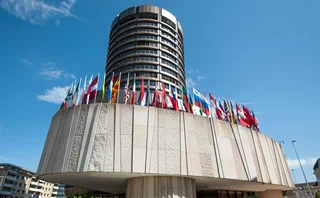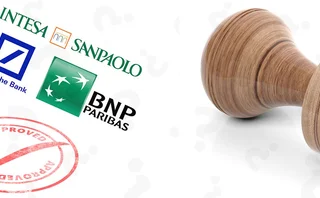
Credit crisis did not start until October 2008, Fed research finds
New research from the US Federal Reserve Bank in St Louis, Missouri, has found US banks did not begin to cut credit significantly until the last few months of last year, more than 12 months after the generally recognised start of the financial crisis.
Although the subprime mortgage crisis started in mid-2007, real estate, commercial and individual lending continued to expand until the third quarter of 2008, albeit at a slower rate, wrote economists Silvio Contessi of the St Louis Fed and Johanna Francis of New York's Fordham University – reports from US commercial banks "do not show clear signs of distress in the commercial and industrial loan segment of the banking industry, at least through the end of September 2008". Meanwhile, falling mortgage rates through most of 2008 meant real estate lending continued to grow as borrowers refinanced existing mortgages.
The picture only changed in the fourth quarter of last year, when net credit contracted sharply – largely the result of lower lending at the country's largest banks, either because of tighter credit standards or lower demand. "The relatively smaller banks show little impact from the recession that began in 2007. Their credit growth was positive and comparable to, if not larger than, previous years," the study commented.
The study also found increasing use of previously arranged credit lines, suggesting 2008 saw a drop in new loans arranged that was masked by the tapping of credit facilities arranged before the start of the crisis. Credit was also becoming more difficult to obtain from other sources such as syndicated loans and commercial paper issuance, prompting commercial borrowers to rely more on banks. In the fourth quarter, credit contracted at a rate last seen in the 1990-91 recession, Contessi and Francis wrote.
This does not bode well for the recovery of the financial markets, they add, drawing on a comparison between the current recession and five recent recessions. The early stages of this recession looked similar to the 1980 and 1981-2 recessions in the US, implying a rapid recovery in credit, but "in the 1991 recession, however, the decline in credit expansion and the increase in contraction were persistent, lasting for two years into the recovery". The authors added: "It is possible further quarterly data will reveal a creditless recovery", in which credit remains difficult to obtain even after the economy starts to grow again.
See also: US Congress: Banks may need more stress tests
Banks repay $68bn in Tarp funds to US Treasury
FSA stress tests banks for four-year downturn
Defaults to rise as IMF predicts slow recovery
Only users who have a paid subscription or are part of a corporate subscription are able to print or copy content.
To access these options, along with all other subscription benefits, please contact info@risk.net or view our subscription options here: http://subscriptions.risk.net/subscribe
You are currently unable to print this content. Please contact info@risk.net to find out more.
You are currently unable to copy this content. Please contact info@risk.net to find out more.
Copyright Infopro Digital Limited. All rights reserved.
You may share this content using our article tools. Printing this content is for the sole use of the Authorised User (named subscriber), as outlined in our terms and conditions - https://www.infopro-insight.com/terms-conditions/insight-subscriptions/
If you would like to purchase additional rights please email info@risk.net
Copyright Infopro Digital Limited. All rights reserved.
You may share this content using our article tools. Copying this content is for the sole use of the Authorised User (named subscriber), as outlined in our terms and conditions - https://www.infopro-insight.com/terms-conditions/insight-subscriptions/
If you would like to purchase additional rights please email info@risk.net
More on Regulation
One year on, regulators still want a cure for bank runs
Broad support for higher outflow assumptions on uninsured deposits, but that won’t save insolvent banks
Watchlist and adverse media monitoring solutions 2024: market update and vendor landscape
This Chartis report updates Watchlist monitoring solutions 2022 and focuses on solutions for sanctions (name and transaction) screening and monitoring adverse media and its related elements
Basel Committee reviewing design of liquidity ratios
Focus on LCR and NSFR after Silicon Valley Bank and Credit Suisse, but assumptions may not change
Risk, portfolio margin, regulation: regtech to the rescue
A white paper outlining the complexity of setting the course for risk, margin and regulation
Prop shops recoil from EU’s ‘ill-fitting’ capital regime
Large proprietary trading firms complain they are subject to hand-me-down rules originally designed for banks
Revealed: the three EU banks applying for IMA approval
BNP Paribas, Deutsche Bank and Intesa Sanpaolo ask ECB to use internal models for FRTB
FCA presses UK non-banks to put their affairs in order
Greater scrutiny of wind-down plans by regulator could alter capital and liquidity requirements
Industry calls for major rethink of Basel III rules
Isda AGM: Divergence on implementation suggests rules could be flawed, bankers say
Most read
- Basel Committee reviewing design of liquidity ratios
- Breaking out of the cells: banks’ long goodbye to spreadsheets
- Too soon to say good riddance to banks’ public enemy number one







